General description
1. Catalytic Converter (see picture) designed to reduce the content of hydrocarbons, carbon monoxide and nitrogen oxide in the exhaust "burns" these components by converting them into water and carbon dioxide (by heating, accelerating the chemical reaction between the constituents of the exhaust gases).
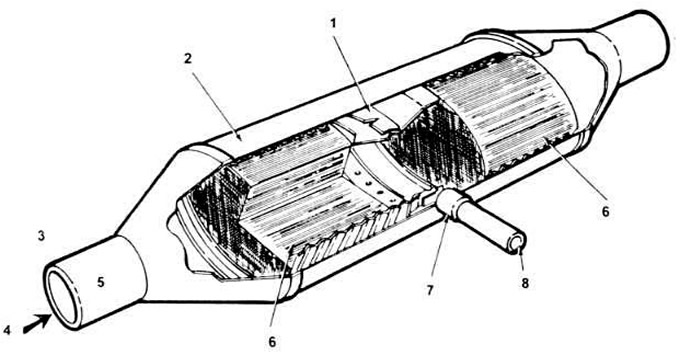
8.1. Typical 3-way catalytic converter (reduces nitric oxide) and convection oxidation catalyst (reduces the content of bicarbonate HC and carbon monoxide CO).
1. Mixing chamber (average).
2. Shell.
3. Exhaust gases from the engine.
4. Flow.
5. Intake.
6. Three-stage catalyst.
7. Secondary air inlet tip.
8. Air from manifold air control pump.
2. The catalytic converter is very similar to a muffler, it is located in the exhaust system just behind a short section of pipe under the exhaust manifold (to check and replace it, you will have to lift the car).
3. Warning: If a large amount of unburned gasoline enters the converter, it may overheat and catch fire. Always observe the following precautions:
- use UNLEADED gasoline;
- avoid prolonged idling;
- do not force the engine to run with an almost empty tank;
- Avoid driving downhill with the ignition off.
Examination
Note: The operation of the catalytic converter can be checked with an infrared sensor. To carry out such a check, contact a specialist. Visually, you can check the condition of the neutralizer by the following signs.
4. Check the bolts on the flange between the horn section of the exhaust pipe and the front end of the catalytic converter, as well as the U-bolt securing the rear end of the catalyst to the exhaust pipe - they should be tight. Check the tightness of the clamps securing the ends of both hoses from the air inlet system to the exhaust manifold to the catalytic converter.
5. Check the converter itself for dents (maximum 19 mm (3/4 inch) depth) and other damage that may affect its performance.
6. Check the thermal insulation plates above and below the catalytic converter. There may be damage.
Replacing elements
Early four-cylinder engines / 3.8LV6 engines (two-stage catalyst, under the body)
Warning: do not attempt to remove the catalytic converter until the exhaust system has completely cooled down.
7. Raise the vehicle and place it securely on stands. Lubricate the clamp bolts with good penetrating oil, let it soak in.
8. Unscrew the flange bolts from the flange between "carob" (curved) and exhaust tubes (see picture). Remove old gaskets if they are stuck to the pipes.
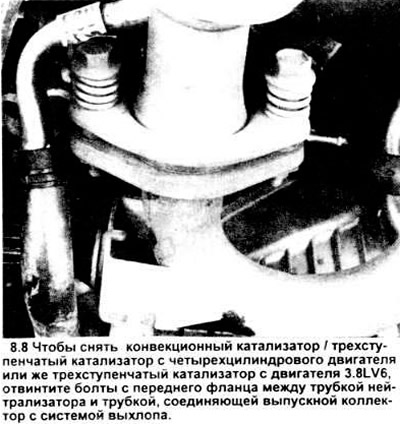
9. Release hose clamps (see picture) and disconnect the hoses from the inlets to the tubes of the air intake system to the exhaust manifold.
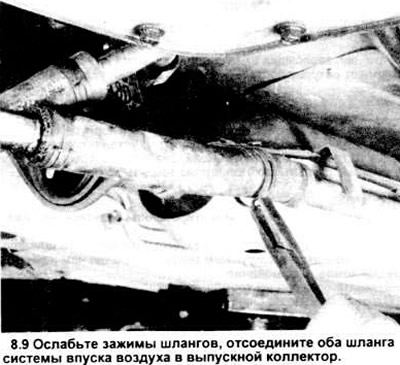
10. Unscrew the U-bolt (see picture) from the back of the catalytic converter and main exhaust pipe assembly.
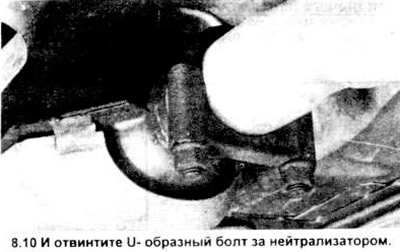
11. Remove the catalytic converter.
12. Install in reverse order. Install a new exhaust pipe gasket on the flange.
13. Check and, if necessary, replace the rubber holders of the exhaust pipe while the car is raised (see chapter 4).
14. Start the engine, carefully check for leaks in the exhaust system.
Engines 3.0L/3.8LV6 (two-stage catalyst, under the engine)
15. Raise the vehicle and place it securely on stands. Lubricate the clamp bolts with good penetrating oil.
16. Disconnect the electrical wire from the oxygen content sensor in the exhaust gases (EGO).
17. Unscrew the bolts from the flanges at both ends of the catalytic converter tube (see picture).
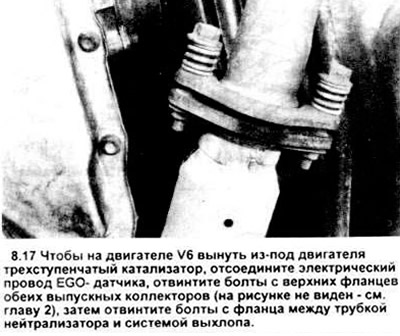
18. Remove the catalytic converter tube (see picture).
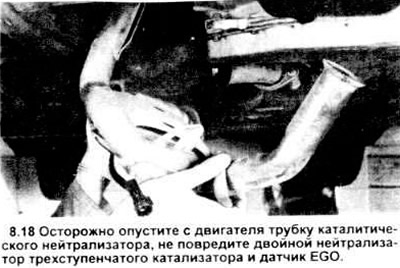
19. Install in reverse order. Don't forget to put new gaskets on the flange.
20. Start the engine, check for leaks.
Visitor comments